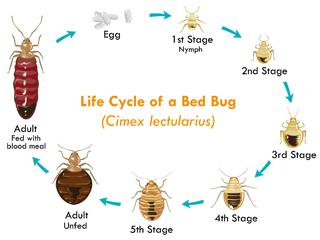
Understanding the Differences: Mosquito Bites vs Bed Bugs
Have you ever wondered what sets mosquito bites apart from bed bugs? Both are common household pests, but they have distinct characteristics that make them easily recognizable. In this detailed comparison, we’ll delve into the various aspects of these two insects to help you differentiate between them.
Appearance
Mosquitoes are slender, long-legged insects with a distinctive proboscis. They come in various colors, including black, brown, and white. Bed bugs, on the other hand, are flat, oval-shaped insects with a reddish-brown color. They are typically about the size of an apple seed, making them difficult to spot at first glance.

Size and Shape
Mosquitoes are generally longer and thinner than bed bugs. They have a slender body and long legs, which enable them to fly. Bed bugs, on the contrary, have a more flattened body and shorter legs, which allow them to hide in tight spaces.
Feeding Habits
Mosquitoes feed on nectar, plant juices, and blood. Female mosquitoes require blood to produce eggs, which is why they are often found biting humans. Bed bugs, however, feed exclusively on blood. They are nocturnal and will bite humans while they sleep.
Biting Patterns
Mosquito bites usually leave a small, red bump on the skin. They may also cause itching, swelling, and inflammation. Bed bug bites, on the other hand, often appear in a line or cluster and can be more difficult to identify. They may not cause immediate itching or swelling, but they can lead to allergic reactions in some people.
Transmission of Diseases
Mosquitoes are known carriers of diseases such as malaria, dengue fever, and Zika virus. When they bite, they can transfer these pathogens to their hosts. Bed bugs, while not known to transmit diseases, can cause significant discomfort and stress due to their bites.
Prevention and Control
Preventing and controlling mosquito and bed bug infestations requires different strategies. To prevent mosquitoes, you can use insect repellents, wear protective clothing, and eliminate standing water where they breed. For bed bugs, you’ll need to inspect your home thoroughly, vacuum regularly, and seal cracks and crevices where they may hide.
Table: Comparison of Mosquito Bites and Bed Bug Bites
| Feature | Mosquito Bites | Bed Bug Bites |
|---|---|---|
| Appearance | Slender, long-legged insects with a proboscis | Flat, oval-shaped insects with a reddish-brown color |
| Size and Shape | Longer and thinner | Flattened body and shorter legs |
| Feeding Habits | Feed on nectar, plant juices, and blood | Feed exclusively on blood |
| Biting Patterns | Small, red bump with itching, swelling, and inflammation | Line or cluster of bites, may not cause immediate itching or swelling |
| Transmission of Diseases | Carriers of diseases like malaria, dengue fever, and Zika virus | Not known to transmit diseases |
| Prevention and Control | Use insect repellents, wear protective clothing, eliminate standing water | Inspect home, vacuum regularly, seal cracks and crevices |
Understanding the differences between mosquito bites and bed bug bites can help you identify and manage infestations more effectively. By knowing the characteristics of each insect, you can take appropriate measures to protect your home and health.




